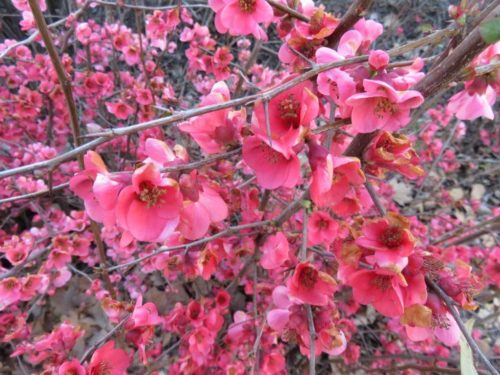
Gardening writer CEDRIC BRYANT praises the crabapple for its abundance of fragrant flowers in spring.
CRABAPPLES for spring came to mind after watching a documentary of when Jacqueline Kennedy moved into the White House in 1961.

Kennedy quickly established extensive rose gardens, but the other main feature was an avenue of crabapples, namely Malus ioensis “Plena”, also known as the Bechtel crab or prairie crab, as it’s native to North America. This was first found and brought into cultivation in 1840 by EA Bechtel, who found it growing in Staunton, Illinois.
There are at least 50 species of crabapple, most originating in China and Japan. At least 14 varieties are readily available here, plus about six as grafted weeping varieties. Malus hupehensis has been cultivated in China for hundreds of years, its leaves used as a tea substitute. It was first introduced into Britain from China by the famous plant hunter Ernest Wilson in 1900. Look out for M. hupehensis “Strawberry Parfait”, with its abundance of pink and white fragrant flowers with a reddish edge.
Another favourite is M. floribunda, with single flowers borne in clusters of four to seven. The reddish-pink outer petals fade to pink with the insides fading to white, with prominent yellow stamens. These all grow to about five metres tall with a similar spread.
OTHER favourite spring blossom trees are flowering cherries, made famous by festivals in Japan, but here we face the wretched pear and cherry tree slug. It decimates the leaves, leaving just a skeleton of the leaf structure. The insecticide Confidor was a deterrent but this has now been banned. The old-fashioned solution was to throw fine sand or ash on the tree at first sight of these pests with the wind behind you, but this doesn’t address the problem. Ornamental crabapples don’t have this issue, although fruiting crabapples can be attacked by codling moths.

The plant generally known as “japonica” was once very popular. The correct full name is Chaenomeles japonica, or Japanese flowering quince, with “japonica” referring to its origin in Japan. It’s also widely grown in China and related to the fruiting quince Cydonia oblonga. It’s a deciduous shrub presenting a spectacular floral display, usually with red flowers before the leaves appear, with white and pink varieties also available. A word of warning, though – while I don’t often discourage readers from buying particular plants, be aware this shrub has wicked prickles and suckers out of control very easily and rapidly!
THE three-month forecast until the end of November is regular rain for eastern Australia. Certainly August was a gardener’s delight, making it so easy to pull out the profusion of weeds appearing after the rain.
WHEN mulching with drip irrigation, lift the pipes above any existing decomposed mulch and soil, check for any damaged sections and make sure all clips are in place. Flush the line before applying new mulch.
Who can be trusted?
In a world of spin and confusion, there’s never been a more important time to support independent journalism in Canberra.
If you trust our work online and want to enforce the power of independent voices, I invite you to make a small contribution.
Every dollar of support is invested back into our journalism to help keep citynews.com.au strong and free.
Thank you,
Ian Meikle, editor




Leave a Reply